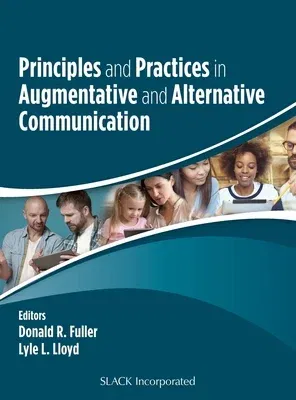A definitive textbook for students in speech-language pathology,
audiology, and communication sciences and disorders, Principles and
Practices in Augmentativeand Alternative Communication** offers
students an introduction to augmentative and alternative communication
(AAC) and prepares them for working with clients with complex
communication needs.
Editors Drs. Donald R. Fuller and Lyle L. Lloyd and their contributors
provide a foundation for the development of assessment and intervention
procedures and practices within the framework of the communication model
and its major components: the means to represent, the means to select,
and the means to transmit.
Principles and Practices in Augmentative and Alternative
Communication consists of five
major units:
-
An introduction to AAC, from its history to current practice
-
An overview of AAC symbols and a comprehensive discussion of aided and
unaided symbols
-
A review of AAC technology
-
The components of AAC assessment: principles, vocabulary, symbol
selection, and the prescription of AAC technology
-
AAC intervention: everything from the components of the intervention
process to examples from specific cases and settings
Instructors in educational settings can visit www.efacultylounge.com for
additional materials to be used for teaching in the classroom.
Students and professionals looking for a foundational textbook in the
field of AAC will find Principles and Practices in Augmentative and
Alternative Communication to be effective, contemporary, and
practical.

